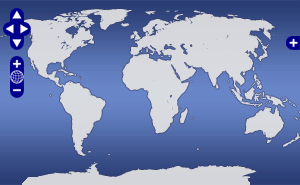Two-dimensional (2-D) tomographic P-wave velocity structure of the upper crust between the Mid-Atlantic Ridge and the Rio Grande Rise
These gridded data files present tomographic models of P-wave seismic velocity structure of the upper 2-3 km of oceanic crust between the Mid-Atlantic Ridge and the Rio Grande Rise. The models were derived from active-source data acquired during the CREST 2-D seismic experiment conducted during Langseth cruise MGL1601 in 2016 (chief scientists Bobby Reece and Gail Christeson). The models and results are described in Kardell et al. (2019). Using a 2-D constant gradient starting model of crustal velocity, iterative tomographic inversions were performed with traveltime picks of refracted arrivals on more than 2000 shot gathers. Traveltime residuals were inverted for 2-D slowness perturbations, and ray paths and traveltimes were predicted using a shortest-path algorithm. Ray tracing was performed on a 2-D grid constrained by seafloor topogrophy from multi-beam measurements and basement topography picked on migrated seismic images. The data set is in netCDF grd format, which can be used in GMT software. It was generated as part of the CREST project: Crustal Reflectivity Experiment Southern Transect. Funding was provided by NSF grants OCE15-37108 and OCE15-37169.
Kardell, Dominik
Investigator
UTIG
Christeson, Gail
Investigator
UTIG
Estep, Justin
Investigator
TAMU
Reece, Robert
Investigator
TAMU
Carlson, Richard
Investigator
TAMU
Device Info
NotApplicable
Platform
Marcus G. Langseth
LDEO
Awards
Data DOI
Quality
2
The data have been processed/modified to a level beyond that of basic quality control (e.g. final processed sonar data, photo-mosaics).
Data Files
References
Documents
Data Citation Information
ISO/XML Metadata
Expand

 Map View
Map View

